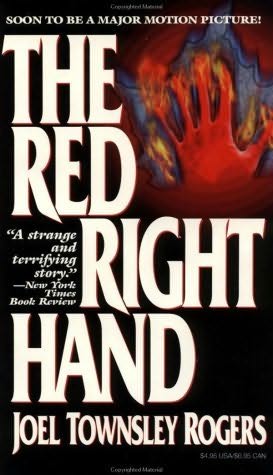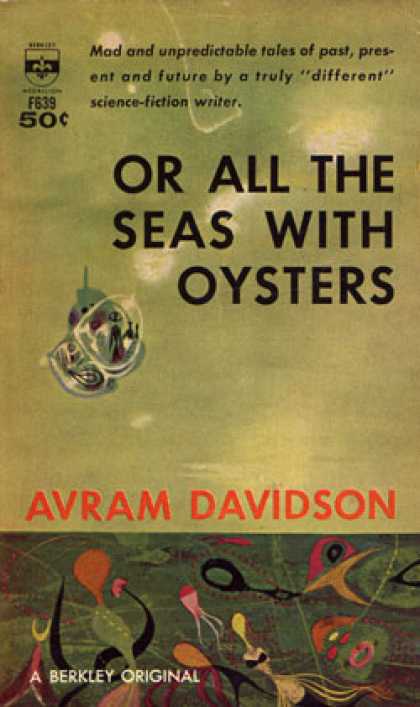
THE RED RIGHT HAND by Joel Townsley Rogers
This is a murder mystery written in 1945, and there is very little in the way of horror in the book. It only superficially touches upon thriller elements, although it does try to use them to its advantage. The book wants to create tension, but the author isn’t completely successful.
All of that said, this could be the source material - with very few changes - for one of the best slasher flicks of all time.
You’ve got a body count of at least five people and a pet dog, and up to three more off camera. You’ve got a trepanning, a face removal and a severed arm. You’ve got a murderous hobo with sharpened teeth and mismatched limbs nicknamed “Corkscrew”. There’s an artist who wears leopard skins and feathers. You’ve got a Professor of Psychology who has authored the definitive book on “Psychopathology”. You’ve got a semi-rural setting, a lonesome house, and cut telephone lines.
And underneath it all, you’ve got a somewhat deceptive mystery with a few great moments, such as when a note is slipped under a desk blotter by a victim who realizes why the murders are happening… only to discover an earlier note under there, from a previous victim.
The story falls down in its construction. The author shifts in time too much, overusing flashbacks in what seems like a deliberate effort to distinguish his book from more traditionally linear works, eschewing chapter breaks and initially interjecting police interview transcripts but abandoning that practice less than halfway through the novel.
I can recommend the book, but I’m not going to be unusually forceful about that recommendation. Unless I’m speaking to a producer or director of slasher films, at which point I’m going to beg them to read this one.
Three stars out of five.

OR ALL THE SEAS WITH OYSTERS by Avram Davidson
Avram Davidson won the Hugo Award for Best Short Story in 1958 with the title story for this 1962 collection. The other stories in it vary in tone, subject, and length; Davidson would (and did) write equally well in fantasy, science fiction, and horror. He used whatever settings were appropriate… distant future, centuries past, near future, contemporaneous… and as often or not he produced superlative work.
Summerland, The Woman Who Thought She Could Read, and Up the Close and Down the Stair are all stories which should appeal to any horror fan, and many of the other stories included will satisfy the horror-minded reader.
What stands out for me in this collection is Davidson’s use of dialect. Attempting to insert accents into stories is a perilous decision for an author. It adds slightly to the effectiveness of the characterization when it works, and is very destructive to the flow of the story when it fails. And it typically fails. In Davidson’s stories, however, the man’s ear for dialogue and his eye for sentence construction combine to create something beautiful: stories which read as much like plays as they do traditional stories.
Davidson tosses convention aside when creating his work, and the reader is rewarded. More than simply providing interesting tales, Avram Davidson’s stories are rich in subtext and they encourage the reader to think. This collection is a wonderful introduction to this fine writer. Collections are, like anthologies, typically very uneven in story quality. Or All the Seas with Oysters breaks that mold.
Four stars out of five.

HELL HOUSE by Richard Matheson
Much has been made of the connections between this novel and The Haunting of Hill House by Shirley Jackson. Thankfully, both are considered masterworks and have seen multiple printings, and both are readily available in one form or another.
That doesn’t necessarily mean people are reading these stories, however. It’s pretty easy to get caught up in the buzz surrounding the newest offerings from one publisher or another and to forget that the classics are available.
If this describes you, I strongly encourage you to find a copy of Hell House.
The book is fairly short, clocking in at around 250 pages in its original paperback form. It is Matheson, though, and it is some of his mid-career work, from when he was scripting multiple movies each year. Those 250 pages contain more story content and character development than many 400 page novels.
We’re introduced to a group of four people who are going to ascertain if Hell House is truly haunted, in an effort to provide a dying industrialist some information about a possible afterlife.
Quickly we discover that the house is, in fact, haunted. From there, it is a matter of watching as each one of the four attempts to help pacify or eliminate the haunting spirits, while simultaneously dealing with spectral assaults.
The ghosts here are unusually effective, because of abilities both to affect material objects in a minor way and to induce visions and alter the mind a person… sometimes all the way up to full possession.
The four visitors interact. They aren’t simple caricatures; they don’t constantly fight and bicker, nor do they show absolute trust and love for each other. They have points of commonality and points of dissent, and it is through those dissensions - and the weakening of resolve that accompany them - that the spirits exert their strongest influences.
Many of the ideas in this story have been repeatedly used in future tales, to the point where they don’t seem as impressive as they truly were. Matheson is a great storyteller, but he was also an innovator, and this is as good a place as any to experience that.
Five stars out of five.
--Bill Lindblad
